- Home
- H. P. Lovecraft
The Road to Madness Page 22
The Road to Madness Read online
Page 22
After the doctors and nurses had left, I whispered an awestruck question:
“Good God, Manton, but what was it? Those scars—was it like that?”
And I was too dazed to exult when he whispered back a thing I had half expected—
“No—it wasn’t that way at all. It was everywhere—a gelatin—a slime—yet it had shapes, a thousand shapes of horror beyond all memory. There were eyes—and a blemish. It was the pit—the maelstrom—the ultimate abomination. Carter, It was the unnamable!”
Imprisoned with the Pharaohs
(With Harry Houdini)
This account was ghost-written by H. P. Lovecraft for Harry Houdini (1874–1926) born Erich Weiss in Appleton, Wisconsin, who took his stage name after the great French magician, Jean Eugene, Robert-Houdin (1805–1871). He was for many years an escape artist who had no peer, and was prominent in the exposure of spiritualistic frauds. This account as written by H. P. Lovecraft first appeared in Weird Tales for May 1924, and was subsequently reprinted in the issue for July 1939.
I
Mystery attracts mystery. Ever since the wide appearance of my name as a performer of unexplained feats, I have encountered strange narratives and events which my calling has led people to link with my interests and activities. Some of these have been trivial and irrelevant, some deeply dramatic and absorbing, some productive of weird and perilous experiences and some involving me in extensive scientific and historical research. Many of these matters I have told and shall continue to tell very freely; but there is one of which I speak with great reluctance, and which I am now relating only after a session of grilling persuasion from the publishers of this magazine, who had heard vague rumors of it from other members of my family.
The hitherto guarded subject pertains to my non-professional visit to Egypt fourteen years ago, and has been avoided by me for several reasons. For one thing, I am averse to exploiting certain unmistakably actual facts and conditions obviously unknown to the myriad tourists who throng about the pyramids and apparently secreted with much diligence by the authorities at Cairo, who cannot be wholly ignorant of them. For another thing, I dislike to recount an incident in which my own fantastic imagination must have played so great a part. What I saw—or thought I saw—certainly did not take place; but is rather to be viewed as a result of my then recent readings in Egyptology, and of the speculations anent this theme which my environment naturally prompted. These imaginative stimuli, magnified by the excitement of an actual event terrible enough in itself, undoubtedly gave rise to the culminating horror of that grotesque night so long past.
In January, 1910, I had finished a professional engagement in England and signed a contract for a tour of Australian theatres. A liberal time being allowed for the trip, I determined to make the most of it in the sort of travel which chiefly interests me; so accompanied by my wife, I drifted pleasantly down the Continent and embarked at Marseilles on the P. & O. Steamer Malwa, bound for Port Said. From that point I proposed to visit the principal historical localities of lower Egypt before leaving finally for Australia.
The voyage was an agreeable one, and enlivened by many of the amusing incidents which befall a magical performer apart from his work. I had intended, for the sake of quiet travel, to keep my name a secret; but was goaded into betraying myself by a fellow-magician whose anxiety to astound the passengers with ordinary tricks tempted me to duplicate and exceed his feats in a manner quite destructive of my incognito. I mention this because of its ultimate effect—an effect I should have foreseen before unmasking to a shipload of tourists about to scatter throughout the Nile valley. What it did was to herald my identity wherever I subsequently went, and deprive my wife and me of all the placid inconspicuousness we had sought. Traveling to seek curiosities, I was often forced to stand inspection as a sort of curiosity myself!
We had come to Egypt in search of the picturesque and the mystically impressive, but found little enough when the ship edged up to Port Said and discharged its passengers in small boats. Low dunes of sand, bobbing buoys in shallow water, and a drearily European small town with nothing of interest save the great De Lesseps statue, made us anxious to get on to something more worth our while. After some discussion we decided to proceed at once to Cairo and the pyramids, later going to Alexandria for the Australian boat and for whatever Greco-Roman sights that ancient metropolis might present.
The railway journey was tolerable enough, and consumed only four hours and a half. We saw much of the Suez Canal, whose route we followed as far as Ismailiya, and later had a taste of Old Egypt in our glimpse of the restored fresh-water canal of the Middle Empire. Then at last we saw Cairo glimmering through the growing dusk; a winkling constellation which became a blaze as we halted at the great Gare Centrale.
But once more disappointment awaited us, for all that we beheld was European save the costumes and the crowds. A prosaic subway led to a square teeming with carriages, taxicabs, and trolley-cars and gorgeous with electric lights shining on tall buildings; whilst the very theatre where I was vainly requested to play, and which I later attended as a spectator, had recently been renamed the “American Cosmograph.” We stopped at Shepheard’s Hotel, reached in a taxi that sped along broad, smartly built-up streets; and amidst the perfect service of its restaurant, elevators and generally Anglo-American luxuries the mysterious East and immemorial past seemed very far away.
The next day, however, precipitated us delightfully into the heart of the Arabian Nights atmosphere; and in the winding ways and exotic skyline of Cairo, the Baghdad of Harun-al-Rashid seemed to live again. Guided by our Baedeker, we had struck east past the Ezbekiyeh Gardens along the Mouski in quest of the native quarter, and were soon in the hands of a clamorous cicerone who—notwithstanding later developments—was assuredly a master at his trade.
Not until afterward did I see that I should have applied at the hotel for a licensed guide. This man, a shaven, peculiarly hollow-voiced and relatively cleanly fellow who looked like a Pharaoh and called himself “Abdul Reis el Drogman,” appeared to have much power over others of his kind; though subsequently the police professed not to know him, and to suggest that reis is merely a name for any person in authority, whilst “Drogman” is obviously no more than a clumsy modification of the word for a leader of tourist parties—dragoman.
Abdul led us among such wonders as we had before only read and dreamed of. Old Cairo is itself a story-book and a dream—labyrinths of narrow alleys redolent of aromatic secrets; Arabesque balconies and oriels nearly meeting above the cobbled streets; maelstroms of Oriental traffic with strange cries, cracking whips, rattling carts, jingling money, and braying donkeys; kaleidoscopes of polychrome robes, veils, turbans, and tarbushes; water-carriers and dervishes, dogs and cats, soothsayers and barbers; and over all the whining of blind beggars crouched in alcoves, and the sonorous chanting of muezzins from minarets limned delicately against a sky of deep, unchanging blue.
The roofed, quieter bazaars were hardly less alluring. Spice, perfume, incense beads, rugs, silks, and brass—old Mahomoud Suleiman squats cross-legged amidst his gummy bottles while chattering youths pulverize mustard in the hollowed-out capital of an ancient classic column—a Roman Corinthian, perhaps from neighboring Heliopolis, where Augustus stationed one of his three Egyptian legions. Antiquity begins to mingle with exoticism. And then the mosques and the museum—we saw them all, and tried not to let our Arabian revel succumb to the darker charm of Pharaonic Egypt which the museum’s priceless treasures offered. That was to be our climax, and for the present we concentrated on the mediaeval Saracenic glories of the Califs whose magnificent tomb-mosques form a glittering faery necropolis on the edge of the Arabian Desert.
At length Abdul took us along the Sharia Mohammed Ali to the ancient mosque of Sultan Hassan, and the tower-flanked Babel-Azab, beyond which climbs the steep-walled pass to the mighty citadel that Saladin himself built with the stones of forgotten pyramids. It was sunset when we scaled that cliff, circled th
e modern mosque of Mohammed Ali, and looked down from the dizzy parapet over mystic Cairo—mystic Cairo all golden with its carven domes, its ethereal minarets and its flaming gardens.
Far over the city towered the great Roman dome of the new museum; and beyond it—across the cryptic yellow Nile that is the mother of eons and dynasties—lurked the menacing sands of the Libyan Desert, undulant and iridescent and evil with older arcana.
The red sun sank low, bringing the relentless chill of Egyptian dusk; and as it stood poised on the world’s rim like that ancient god of Heliopolis—Re-Harakhte, the Horizon-Sun—we saw silhouetted against its vermeil holocaust the black outlines of the pyramids of Gizeh—the palaeogean tombs there were hoary with a thousand years when Tut-Ankh-Amen mounted his golden throne in distant Thebes. Then we knew that we were done with Saracen Cairo, and that we must taste the deeper mysteries of primal Egypt—the black Kem of Re and Amen, Isis and Osiris.
The next morning we visited the pyramids, riding out in a Victoria across the island of Chizereh with its massive lebbakh trees, and the smaller English bridge to the western shore. Down the shore road we drove, between great rows of lebbakhs and past the vast Zoölogical Gardens to the suburb of Gizeh, where a new bridge to Cairo proper has since been built. Then, turning inland along the Sharia-el-Haram, we crossed a region of glassy canals and shabby native villages till before us loomed the objects of our quest, cleaving the mists of dawn and forming inverted replicas in the roadside pools. Forty centuries, as Napoleon had told his campaigners there, indeed looked down upon us.
The road now rose abruptly, till we finally reached our place of transfer between the trolley station and the Mena House Hotel. Abdul Reis, who capably purchased our pyramid tickets, seemed to have an understanding with the crowding, yelling and offensive Bedouins who inhabited a squalid mud village some distance away and pestiferously assailed every traveler; for he kept them very decently at bay and secured an excellent pair of camels for us, himself mounting a donkey and assigning the leadership of our animals to a group of men and boys more expensive than useful. The area to be traversed was so small that camels were hardly needed, but we did not regret adding to our experience this troublesome form of desert navigation.
The pyramids stand on a high rock plateau, this group forming next to the northernmost of the series of regal and aristocratic cemeteries built in the neighbourhood of the extinct capital Memphis, which lay on the same side of the Nile, somewhat south of Gizeh, and which flourished between 3400 and 2000 B.C. The greatest pyramid, which lies nearest the modern road, was built by King Cheops or Khufu about 2800 B.C., and stands more than 450 feet in perpendicular height. In a line southwest from this are successively the Second Pyramid, built a generation later by King Khephren, and though slightly smaller, looking even larger because set on higher ground, and the radically smaller Third Pyramid of King Mycerinus, built about 2700 B.C. Near the edge of the plateau and due east of the Second Pyramid, with a face probably altered to form a colossal portrait of Khephren, its royal restorer, stands the monstrous Sphinx—mute, sardonic, and wise beyond mankind and memory.
Minor pyramids and the traces of ruined minor pyramids are found in several places, and the whole plateau is pitted with the tombs of dignitaries of less than royal rank. These latter were originally marked by mastabas, or stone bench-like structures about the deep burial shafts, as found in other Memphian cemeteries and exemplified by Perneb’s Tomb in the Metropolitan Museum of New York. At Gizeh, however, all such visible things have been swept away by time and pillage; and only the rock-hewn shafts, either sand-filled or cleared out by archaeologists, remain to attest their former existence. Connected with each tomb was a chapel in which priests and relatives offered food and prayer to the hovering ka or vital principle of the deceased. The small tombs have their chapels contained in their stone mastabas or superstructures, but the mortuary chapels of the pyramids, where regal Pharaohs lay, were separate temples, each to the east of its corresponding pyramid, and connected by a causeway to a massive gate-chapel or propylon at the edge of the rock plateau.
The gate-chapel leading to the Second Pyramid, nearly buried in the drifting sands, yawns subterraneously southeast of the Sphinx. Persistent tradition dubs it the “Temple of the Sphinx”; and it may perhaps be rightly called such if the Sphinx indeed represents the Second Pyramid’s builder Khephren. There are unpleasant tales of the Sphinx before Khephren—but whatever its elder features were, the monarch replaced them with his own that men might look at the colossus without fear.
It was in the great gateway-temple that the life-size diorite statue of Khephren now in the Cairo museum was found; a statue before which I stood in awe when I beheld it. Whether the whole edifice is now excavated I am not certain, but in 1910 most of it was below ground, with the entrance heavily barred at night. Germans were in charge of the work, and the war or other things may have stopped them. I would give much, in view of my experience and of certain Bedouin whisperings discredited or unknown in Cairo, to know what has developed in connection with a certain well in a transverse gallery where statues of the Pharaoh were found in curious juxtaposition to the statues of baboons.
The road, as we traversed it on our camels that morning, curved sharply past the wooden police quarters, post office, drug store and shops on the left, and plunged south and east in a complete bend that scaled the rock plateau and brought us face to face with the desert under the lee of the Great Pyramid. Past Cyclopean masonry we rode, rounding the eastern face and looking down ahead into a valley of minor pyramids beyond which the eternal Nile glistened to the east, and the eternal desert shimmered to the west. Very close loomed the three major pyramids, the greatest devoid of outer casing and showing its bulk of great stones, but the others retaining here and there the neatly fitted covering which had made them smooth and finished in their day.
Presently we descended toward the Sphinx, and sat silent beneath the spell of those terrible unseeing eyes. On the vast stone breast we faintly discerned the emblem of Re-Harakhte, for whose image the Sphinx was mistaken in a late dynasty; and though sand covered the tablet between the great paws, we recalled what Thutmosis IV inscribed thereon, and the dream he had when a prince. It was then that the smile of the Sphinx vaguely displeased us, and made us wonder about the legends of subterranean passages beneath the monstrous creature, leading down, down, to depths none might dare hint at—depths connected with mysteries older than the dynastic Egypt we excavate, and having a sinister relation to the persistence of abnormal, animal-headed gods in the ancient Nilotic pantheon. Then, too, it was I asked myself an idle question whose hideous significance was not to appear for many an hour.
Other tourists now began to overtake us, and we moved on to the sand-choked Temple of the Sphinx, fifty yards to the southeast, which I have previously mentioned as the great gate of the causeway to the Second Pyramid’s mortuary chapel on the plateau. Most of it was still underground, and although we dismounted and descended through a modern passageway to its alabaster corridor and pillared hall, I felt that Abdul and the local German attendant had not shown us all there was to see.
After this we made the conventional circuit of the pyramid plateau, examining the Second Pyramid and the peculiar ruins of its mortuary chapel to the east, the Third Pyramid and its miniature southern satellites and ruined eastern chapel, the rock tombs and the honeycombings of the Fourth and Fifth dynasties, and the famous Campbell’s Tomb whose shadowy shaft sinks precipitously for fifty-three feet to a sinister sarcophagus which one of our camel drivers divested of the cumbering sand after a vertiginous descent by rope.
Cries now assailed us from the Great Pyramid, where Bedouins were besieging a party of tourists with offers of speed in the performance of solitary trips up and down. Seventy minutes is said to be the record for such an ascent and descent, but many lusty sheiks and sons of sheiks assured us they could cut it five if given the requisite impetus of liberal baksheesh. They did not get this impetus, th
ough we did let Abdul take us up, thus obtaining a view of unprecedented magnificence which included not only remote and glittering Cairo with its crowned citadel background of gold-violet hills, but all the pyramids of the Memphian district as well, from Abu Roash on the north to the Dashur on the south. The Sakkara step-pyramid, which marks the evolution of the low mastaba into the true pyramid, showed clearly and alluringly in the sandy distance. It is close to this transition-monument that the famed tomb of Perneb was found—more than four hundred miles north of the Theban rock valley where Tut-Ankh-Amen sleeps. Again I was forced to silence through sheer awe. The prospect of such antiquity, and the secrets each hoary monument seemed to hold and brood over, filled me with a reverence and sense of immensity nothing else ever gave me.
Fatigued by our climb, and disgusted with the importunate Bedouins whose actions seemed to defy every rule of taste, we omitted the arduous detail of entering the cramped interior passages of any of the pyramids, though we saw several of the hardiest tourists preparing for the suffocating crawl through Cheops’ mightiest memorial. As we dismissed and overpaid our local bodyguard and drove back to Cairo with Abdul Reis under the afternoon sun, we half regretted the omission we had made. Such fascinating things were whispered about lower pyramid passages not in the guide books; passages whose entrances had been hastily blocked up and concealed by certain uncommunicative archaeologists who had found and begun to explore them.

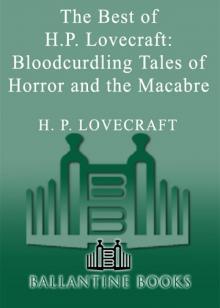 The Best of H.P. Lovecraft
The Best of H.P. Lovecraft The Definitive H.P. Lovecraft: 67 Tales Of Horror In One Volume
The Definitive H.P. Lovecraft: 67 Tales Of Horror In One Volume The Complete Works of H.P. Lovecraft
The Complete Works of H.P. Lovecraft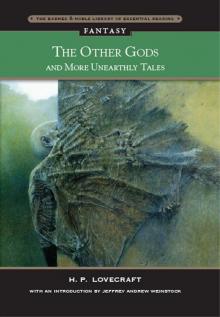 Other Gods and More Unearthly Tales
Other Gods and More Unearthly Tales Lovecraft's Fiction Volume I, 1905-1925
Lovecraft's Fiction Volume I, 1905-1925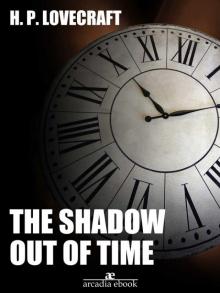 The Shadow Out of Time
The Shadow Out of Time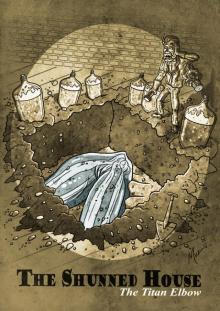 The Shunned House
The Shunned House Lovecraft's Fiction Volume II, 1926-1928
Lovecraft's Fiction Volume II, 1926-1928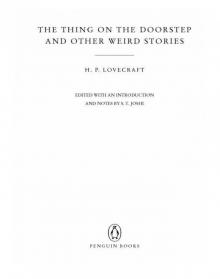 The Thing on the Doorstep and Other Weird Stories
The Thing on the Doorstep and Other Weird Stories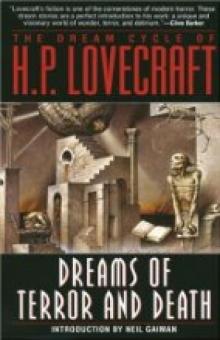 Dream Cycle of H. P. Lovecraft: Dreams of Terror and Death
Dream Cycle of H. P. Lovecraft: Dreams of Terror and Death Great Tales of Horror
Great Tales of Horror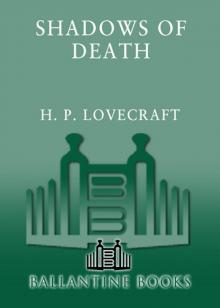 Shadows of Death
Shadows of Death Delphi Complete Works of H. P. Lovecraft (Illustrated)
Delphi Complete Works of H. P. Lovecraft (Illustrated) Waking Up Screaming: Haunting Tales of Terror
Waking Up Screaming: Haunting Tales of Terror H.P. Lovecraft Goes to the Movies
H.P. Lovecraft Goes to the Movies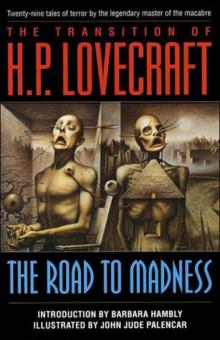 The Road to Madness
The Road to Madness The Complete H.P. Lovecraft Reader (68 Stories)
The Complete H.P. Lovecraft Reader (68 Stories)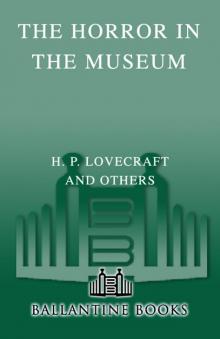 The Horror in the Museum
The Horror in the Museum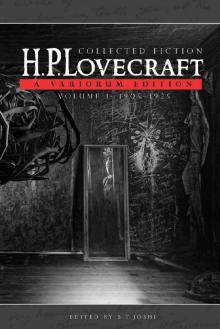 Collected Fiction Volume 1 (1905-1925): A Variorum Edition
Collected Fiction Volume 1 (1905-1925): A Variorum Edition Lovecrafts_Fiction, vol.I_1905-1925
Lovecrafts_Fiction, vol.I_1905-1925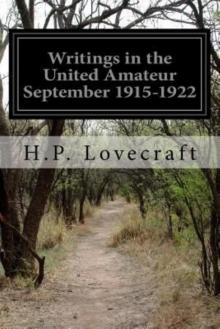 Writings in the United Amateur, 1915-1922
Writings in the United Amateur, 1915-1922 H.P. Lovecraft: The Complete Works
H.P. Lovecraft: The Complete Works Collected Fiction Volume 3 (1931-1936): A Variorum Edition
Collected Fiction Volume 3 (1931-1936): A Variorum Edition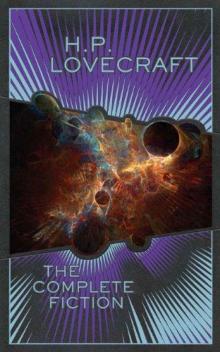 H.P. Lovecraft: The Complete Fiction
H.P. Lovecraft: The Complete Fiction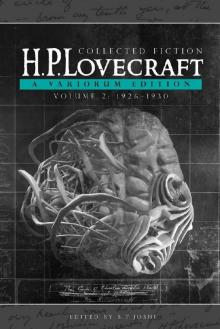 Collected Fiction Volume 2 (1926-1930): A Variorum Edition
Collected Fiction Volume 2 (1926-1930): A Variorum Edition Yog Sothothery - The Definitive H.P. Lovecraft Anthology
Yog Sothothery - The Definitive H.P. Lovecraft Anthology The Complete H.P. Lovecraft Collection (Xist Classics)
The Complete H.P. Lovecraft Collection (Xist Classics)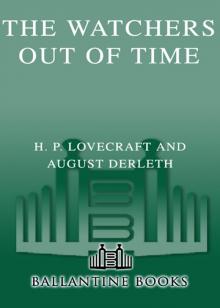 The Watchers Out of Time
The Watchers Out of Time Eldritch Tales
Eldritch Tales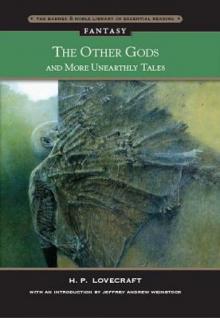 The Other Gods And More Unearthly Tales
The Other Gods And More Unearthly Tales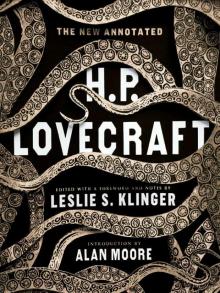 The New Annotated H. P. Lovecraft
The New Annotated H. P. Lovecraft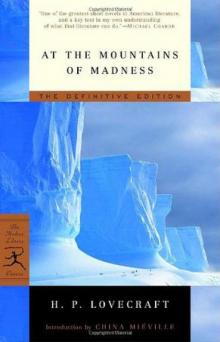 At the mountains of madness
At the mountains of madness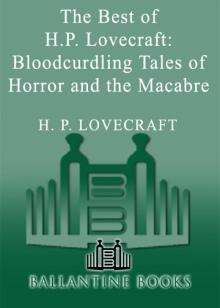 Bloodcurdling Tales of Horror and the Macabre
Bloodcurdling Tales of Horror and the Macabre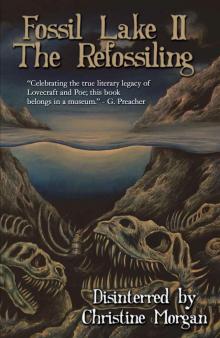 Fossil Lake II: The Refossiling
Fossil Lake II: The Refossiling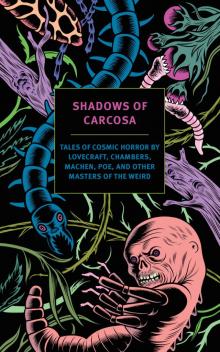 Shadows of Carcosa: Tales of Cosmic Horror by Lovecraft, Chambers, Machen, Poe, and Other Masters of the Weird
Shadows of Carcosa: Tales of Cosmic Horror by Lovecraft, Chambers, Machen, Poe, and Other Masters of the Weird H. P. Lovecraft
H. P. Lovecraft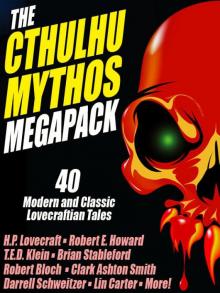 The Cthulhu Mythos Megapack
The Cthulhu Mythos Megapack The Complete H. P. Lovecraft Reader (2nd Edition)
The Complete H. P. Lovecraft Reader (2nd Edition)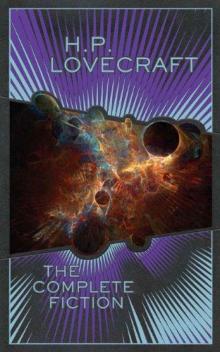 The Complete Fiction
The Complete Fiction Waking Up Screaming
Waking Up Screaming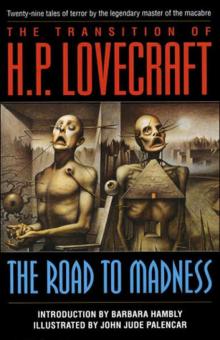 Transition of H. P. Lovecraft
Transition of H. P. Lovecraft![[1935] The Shadow Out of Time Read online](http://i1.bookreadfree.com/i2/04/12/1935_the_shadow_out_of_time_preview.jpg) [1935] The Shadow Out of Time
[1935] The Shadow Out of Time The Horror Megapack
The Horror Megapack